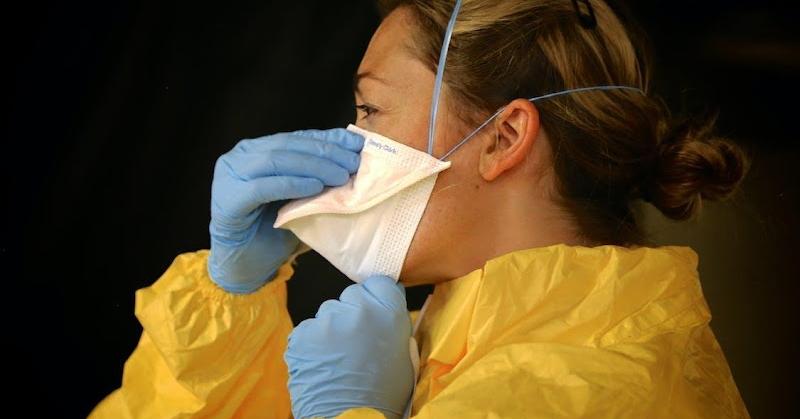Asbestos is a naturally occurring mineral that was used as an insulating and fireproofing material in buildings and products throughout the 20th century. However, asbestos is also a known carcinogen that can cause serious diseases when inhaled over time.
Although the use of asbestos has declined dramatically since the 1970s, it is still present in many older buildings, posing a health risk if fibers become airborne and are inhaled. Limiting exposure to environmental asbestos is crucial for protecting health.
According to the Environmental Protection Agency (EPA), over 1,200 deaths annually in the US are attributed to asbestos exposure. With proper precautions and awareness, individuals can reduce their chances of inhaling asbestos in their daily environments. Here are some ways to limit environmental asbestos exposure.
1. Be aware of common asbestos locations
Knowing where asbestos is most likely found is the first step toward avoiding exposure. Asbestos can be found in insulation, ceiling and floor tiles, roofing shingles, cement products, and other building materials. It’s crucial to be aware of the age of any buildings you visit regularly. Any home renovation project in an older building has a high risk of disturbing asbestos.
Pay particular attention to areas where damage or deterioration is visible. Damaged asbestos-containing materials are more likely to release fibers into the air.
If you or someone you know suspects potential health issues like lung cancer, mesothelioma, asbestosis, etc., from asbestos exposure, seeking medical attention promptly is important. For more information on lung cancer caused by asbestos exposure, visit www.lungcancergroup.com.
2. Do not disturb suspected asbestos
If you know or even just suspect asbestos could be present in a building, you mustn’t disturb it in any way. Actions like drilling, hammering, scraping, sanding, breaking, or sawing asbestos materials can release hazardous fibers into the surrounding air.
The best approach is to leave intact asbestos products alone. Removing them yourself without proper training and equipment can do more harm than good. If asbestos must be removed or repaired, hire certified asbestos abatement professionals. They follow strict procedures to contain and dispose of asbestos safely.
3. Follow proper procedures during renovations
Extreme care must be taken during renovations or repairs in buildings containing asbestos. It’s essential to have any suspected asbestos-containing material tested before starting work, even in newer homes. If tests confirm asbestos is present, strict protocols must be followed for containment and safe removal.
Only work with licensed asbestos abatement contractors on removal or repairs. Make sure they demonstrate an understanding of proper techniques like negative air containment. You and your family members should avoid the renovation area completely until all abatement work is finished. Also, conduct air monitoring afterward to ensure the space is free from lingering asbestos hazards.
Rushing into renovations without checking for asbestos can have devastating health consequences. Don’t rely on the age of the building alone. Even materials manufactured as recently as the early 2000s could contain some asbestos. Keep your safety a top priority.
4. Use air purifiers and ventilation
Proper ventilation and air filtration can reduce the number of asbestos fibers in the air inside your home. Portable high-efficiency particulate air (HEPA) purifiers are recommended to filter out asbestos and other particulates. Also, consider upgrading the filters in your home’s HVAC system to a HEPA model.
Additionally, you can increase ventilation in areas more prone to asbestos exposure, like attics, basements, and storage rooms. Use fans and open windows to bring in fresh air from outside, and ensure bathrooms and kitchens have proper exhaust fans to reduce moisture buildup, which can cause asbestos materials to deteriorate faster. Good air circulation and filtration make a big difference in limiting dangerous asbestos fiber buildup indoors.
5. Wear proper protective equipment
When exposure to asbestos cannot be avoided, wearing appropriate safety gear is crucial. At a minimum, a specialized respirator, disposable coveralls, gloves, and foot coverings are essential. This specialized equipment protects against inhaling fibers or spreading them outside contaminated areas.
Choose a respirator specifically designed for asbestos, rated at least N100. Correct fit and usage are essential for it to work properly. After use, make sure to use disposable coveralls, hoods, and foot coverings by sealing them tightly. Additionally, avoid tracking debris from work sites back home by removing gear slowly and showering immediately after.
Even if not directly handling asbestos, it’s wise to wear a respirator and take precautions in areas where asbestos removal is happening nearby. Don’t rely on ordinary dust masks for asbestos protection. Proper respiratory and clothing protection makes a big difference in exposure risk.
After any asbestos abatement project or repairs, rigorous cleanup is absolutely critical. Any lingering traces of asbestos fibers can pose a health hazard. Don’t cut corners on cleanup and air testing after renovations. Do a thorough visual inspection yourself, and bring in professionals if needed. The safety of those who will use the space depends on it.
6. Avoid disturbing soil or rocks
Naturally occurring asbestos deposits are found in some soil, sand, or rock formations. Driving over these areas, playing in the dirt, gardening, or disturbing the terrain can release asbestos fibers into the environment. It’s best to avoid contact with soils suspected of contamination.
Teach children not to play in natural dirt or sand in areas with asbestos. Don’t allow pets to dig in potentially contaminated ground. Have soil samples tested first for any planned excavation, landscaping, or construction. Asbestos fibers can contaminate materials like mulch, gravel, or quarry stone. Taking proactive steps to identify and avoid contact with contaminated soils and geology can reduce health risks.
Conclusion
While asbestos use has declined, it still poses a health hazard in many environments if fibers are released through disturbance or damage. Everyone can reduce risks by being informed about where asbestos is found, using safe work practices, and following containment and cleanup procedures. Limiting exposure protects the health of families, communities, and future generations. We can live and work safely in environments that may contain this hidden health hazard with proper precautions.
